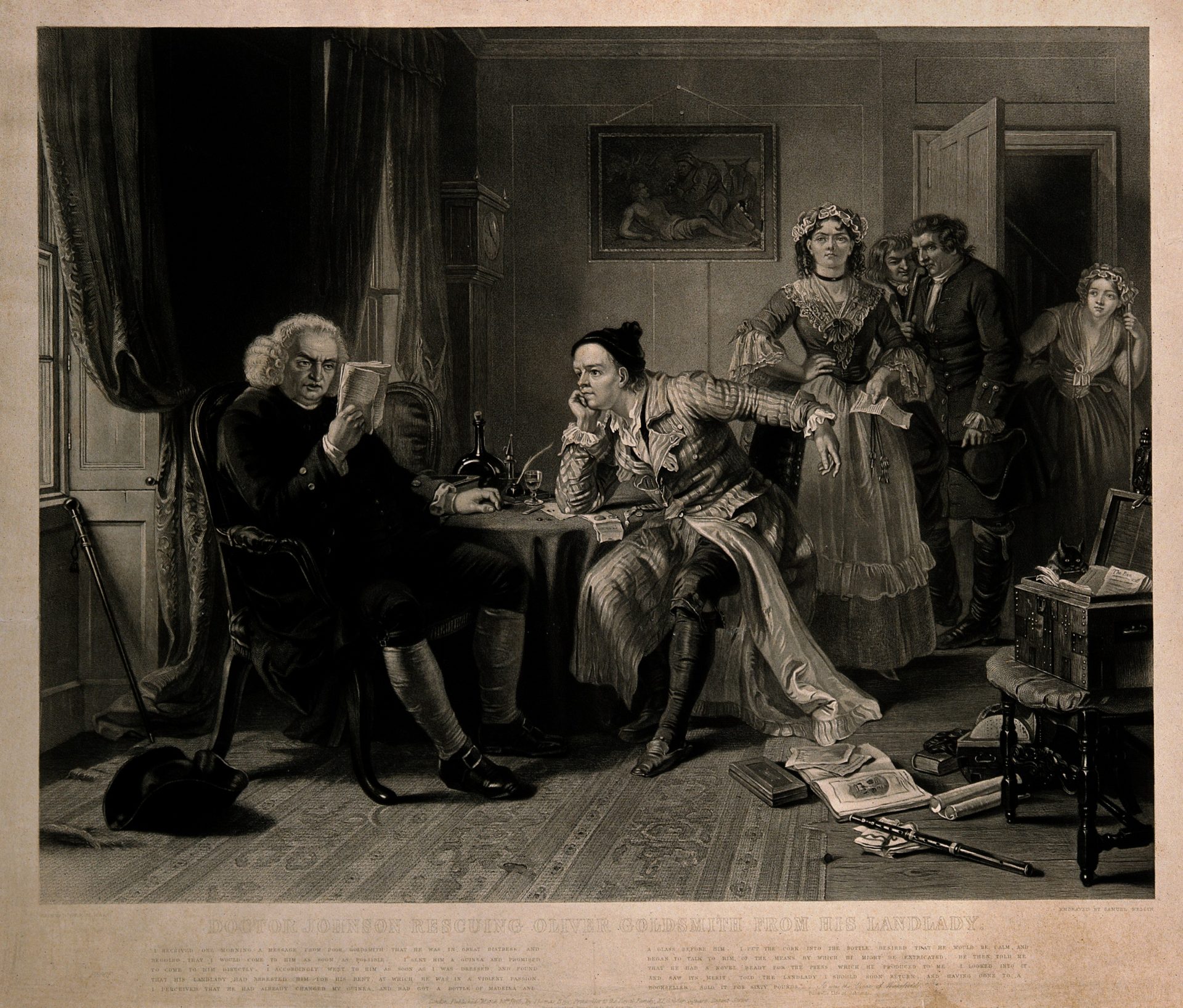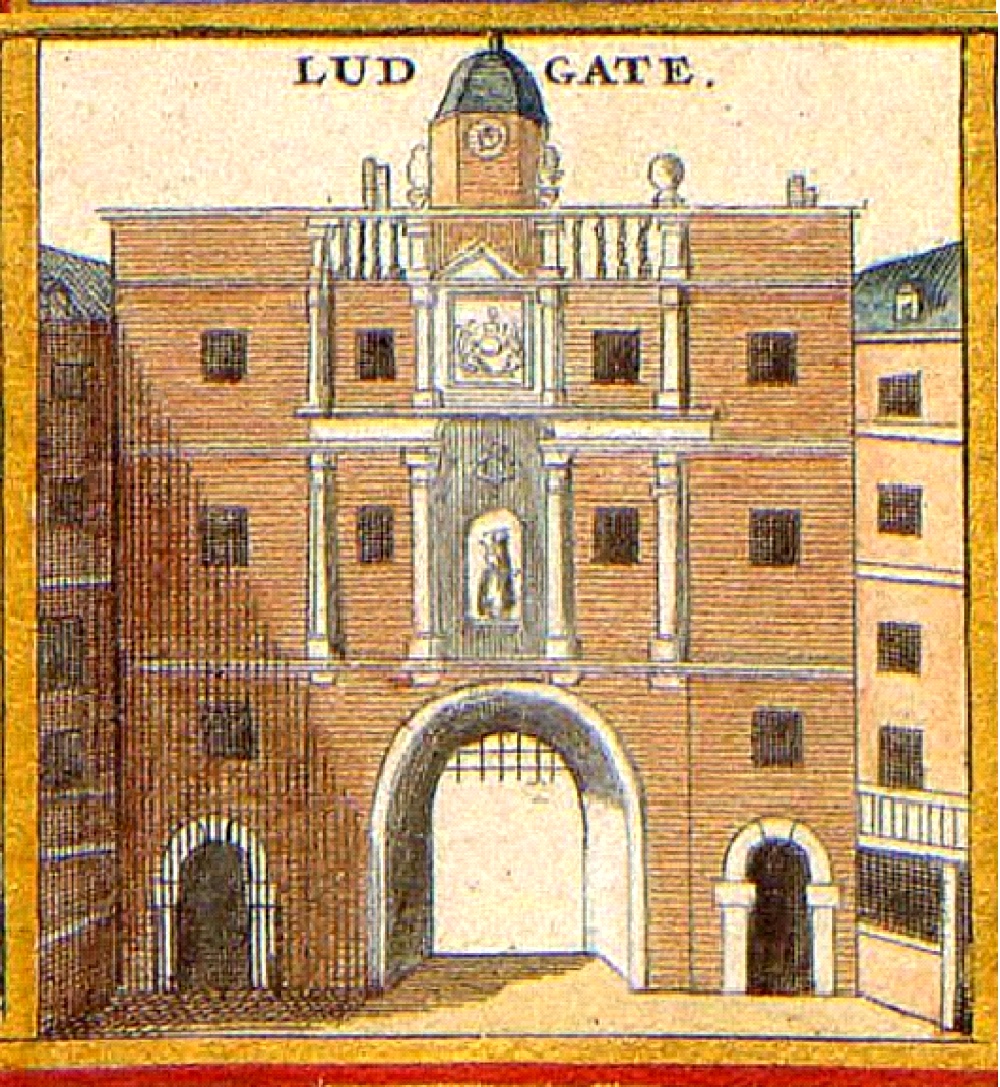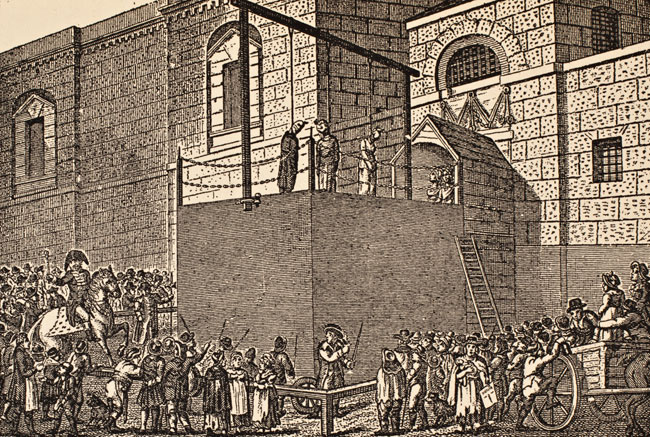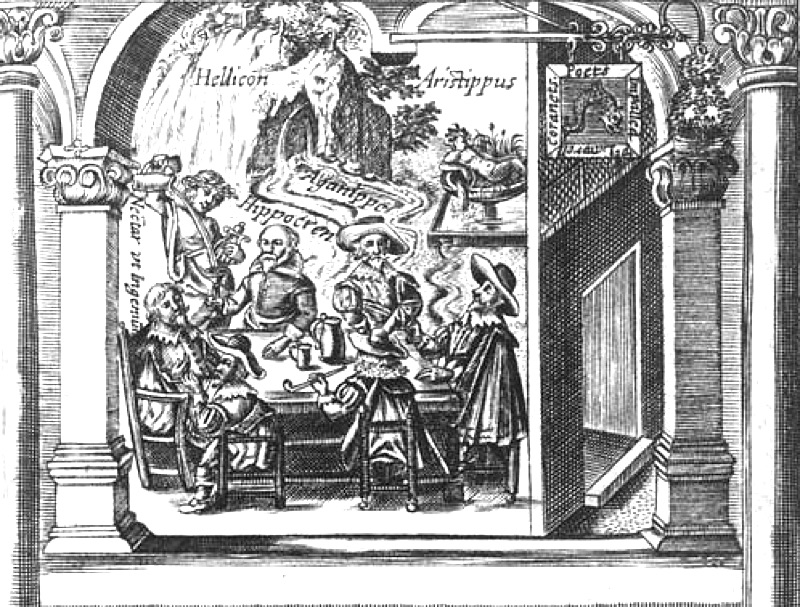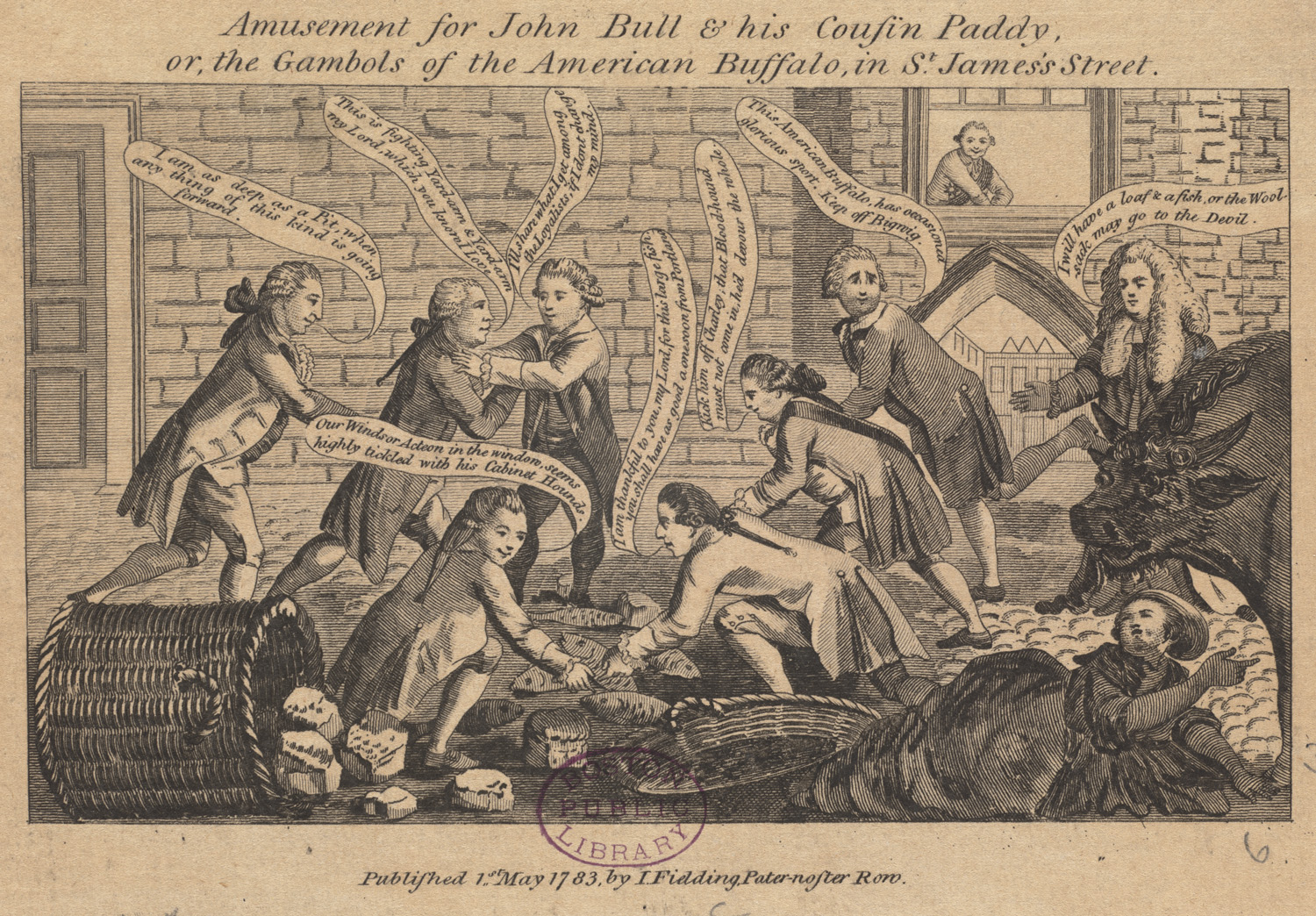Mary Woolnoth, Walbrook & London Stone, Literary London, By Pen Lister. October 15, 2017. Categories: Literary London, Learning Journeys. Tags: learning-point, London
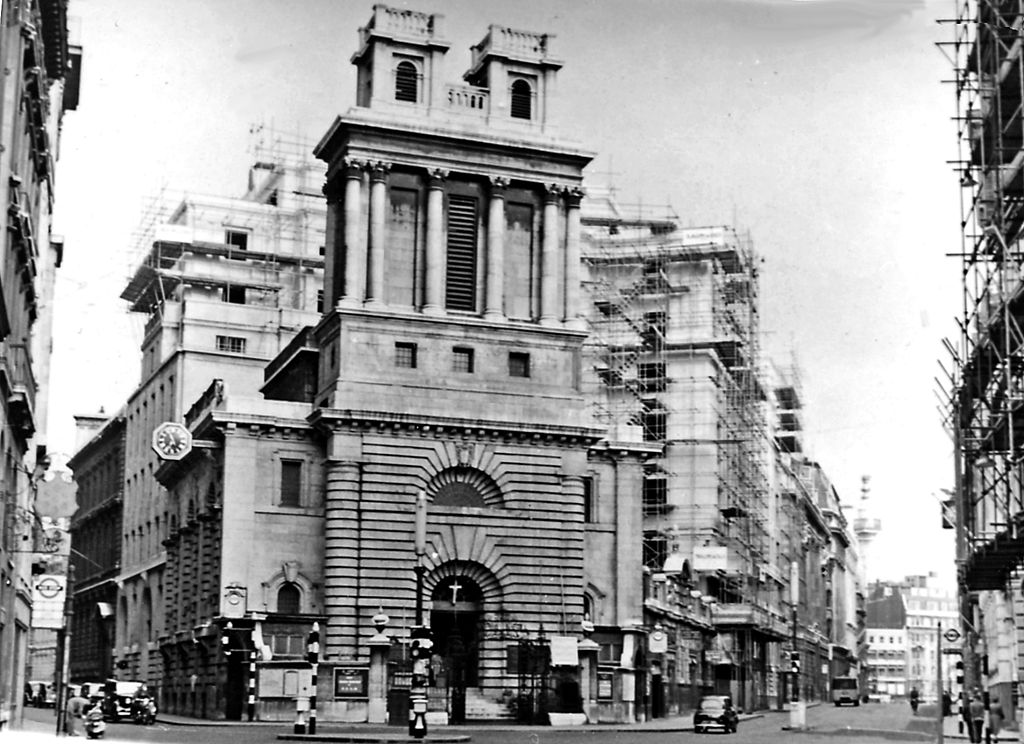
This page covers St Mary Woolnoth, Walbrook and the London Stone.
St Mary Woolnoth
At the end of Lombard St we come to the church of St Mary Woolnoth (1716-1727), designed by Nicholas Hawksmoor.
Pevsner describes it as ‘the most original church exterior in the City of London’. The church figures in T.S. Eliot’s The Waste Land (1922):
‘Unreal City, Under the brown fog of a winter dawn, A crowd flowed over London Bridge, so many, I had not thought death had undone so many. Sighs, short and infrequent, were exhaled, And each man fixed his eyes before his feet. Flowed up the hill and down King William Street, To where Saint Mary Woolnoth kept the hours With a dead sound on the final stroke of nine. There I saw one I knew, and stopped him, crying: “Stetson! “You who were with me in the ships at Mylae! “That corpse you planted last year in your garden, “Has it begun to sprout? Will it bloom this year? “Or has the sudden frost disturbed its bed? “Oh keep the Dog far hence, that’s friend to men, “Or with his nails he’ll dig it up again! “You! Hypocrite lecteur!—mon semblable,—mon frère!”’
https://www.poetryfoundation.org/poems/47311/the-waste-land
Walbrook
This area also takes in interesting locations for Walbrook and the London Stone (also marked on our map).
Walk westwards into the beginning of Queen Victoria Street. Take an immediate left at the Mansion House down _ Walbrook , the route of the _ lost river Walbrook _ that flowed through the centre of the Roman city. The river was navigable this far north from the Thames and the Romans built a port and a Temple to Mithras here, which is currently being excavated in the building site to the west of Walbrook.
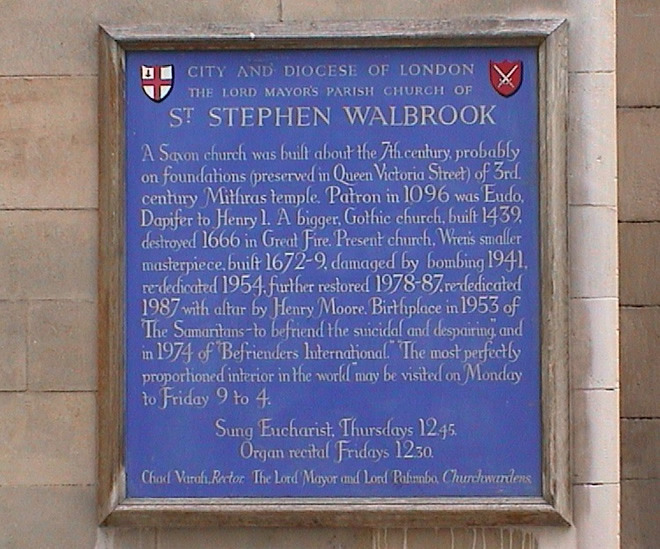
http://www.londonremembers.com/memorials/st-stephen-walbrook-church
In the Bloomberg building on Walbrook to your right a museum displaying artefacts from Roman London will shortly open . Note also the sculpture at the junction of Walbrook and Cannon Street which recreates the Walbrook river as it might have been. We are now within the earliest settlement of the Roman city and are about to visit a location that may have its origins there.
The London Stone
At Cannon Street turn left. Several metres along the same side of the road is _ London Stone , opposite Cannon Street station. When you have finished at London Stone walk back through the Bloomberg building on your way to Watling Street and Bread St, our next learning stop, and note the church of St Stephen Walbook on your right. http://www.londonremembers.com/memorials/st-stephen-walbrook-church
London Stone is one of the London palladiums, a mythical guardian of the city, although this legend may be more 19 th century fancy than any earlier held belief. (NOTE: the London Stone is temporarily at the Museum of London , and no longer situated here). Although its origins are unclear archaeologists think that it may well have been part of the Roman governor’s palace, the Praetorium.
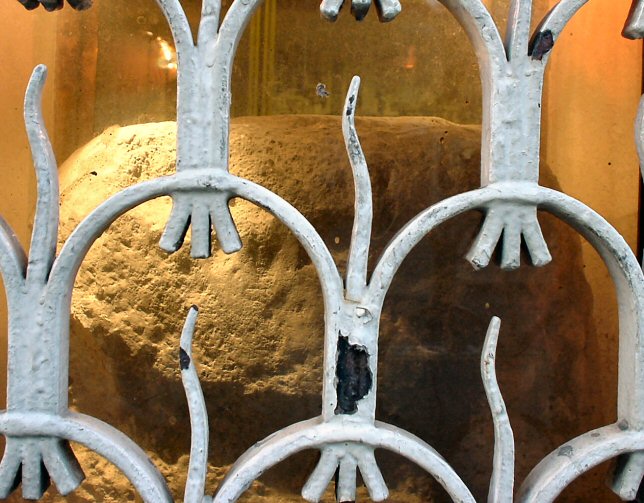
By Lonpicman/CC-BY-SA-3.0, via Wikimedia Commons
London Stone was also a key symbol in the Kentish peasants’ revolt of 1450. Jack Cade, a Kentish rebel protesting against high taxes, unjust and corrupt government, led an army of 5000 Kentish peasants to London. Cade’s army advanced to Southwark, crossed the bridge and stopped at London Stone , which Cade struck and declared himself Lord Mayor. The rebels looted London and returned over London Bridge. When they attempted to return the next day the battle of London Bridge began and continued until the next morning when the rebels were repulsed. Cade was later pursued into Sussex and killed.
In Shakespeare’s Henry VI, Part II (1591), Cade enters and strikes his staff on London Stone:_
Act 4, scene 6. ‘Cade:
Now is Mortimer Lord of this City, And here sitting upon _ London Stone , I charge and command that, of the City’s cost, the pissing-conduit run nothing but claret wine this first year of our reign. And now henceforward it shall be Treason for any that calls me other then Lord Mortimer.’
By the Elizabeth period the stone’s ceremonial function seems to have passed into common belief. John Stow’s Survey of London (1598) mentions London Stone in what was then called Candlewick Street:
‘Standing in _ Walbrook , on the south side of this High Street, neere unto the channell, is pitched upright a great stone called _ London Stone _, fixed in the ground very deep, fastened with bars of iron, and otherwise so stronglie set that if cartes do runne against it through negligence, the wheeles be broken, and the stone itself unshaken. The cause why this stone was there set, the verie time when or other memorie thereof, there is none.’
Aspects of this place to think about
- The origins and population of the city over 2000 years ago
- Lost places (Walbrook river, or the temple to Mithras…)
- Lost London history – who was able to record their experiences, and in what form?
- The Roman street plan
Content available at the location, about the place or area
Investigate all the other icons on the Aurasma augmented trigger, use the icons guide to find out what is available.
![]()
This guide is accessed via the layers icon in the bottom left of any trigger using a similar icon to this one:

Triggering the Augmented Reality
Remember to focus on the trigger image using the Aurasma camera, centering the image to be as similar to what you see on the map as you can. The Aurasma camera provides small watermarks at each corner of its camera view to help guide your focus.
Featured image by Ben Brooksbank , via Wikimedia Commons.
Woolnoth Resources
By Pen Lister October 22, 2017 Categories: Literary London
London Unreal City (7:04)
Excerpt from TS Eliot’s The Wasteland, and Debussy’s Beau Soir, published by HarryLlywelyn https://youtu.be/pMXp4tSUm8w
Wendy Cope, The Waste Land: Five Limericks
“The Thames runs, bones rattle, rats creep; Tiresias fancies a peep– A typist is laid, A record is played– Wei la la. After this it gets deep” http://thebestamericanpoetry.typepad.com/the_best_american_poetry/2009/09/the-waste-land-five-limericks-by-wendy-cope.html
An Occult Psychogeography of Hawksmoor’s London Churches
The following tour of London […] a gruelling 45-mile route visiting lesser known occult locations spread across the British capital, and connecting in its path a whole world of mythologies from Queen Boadicea to Jack the Ripper http://www.thebohemianblog.com/2015/10/an-occult-psychogeography-of-hawksmoors-london-churches.html
Unreal City/The Wasteland (1:20)
A cyber 3 D animated dark fantasy. Second of three films for launch of Poetry Movement, directed by Icecream. https://vimeo.com/132102175
Roman London AD 50-410
Discover how Londinium came to life and what daily life was like in the city 2000 years ago https://www.museumoflondon.org.uk/museum-london/permanent-galleries/roman-london
